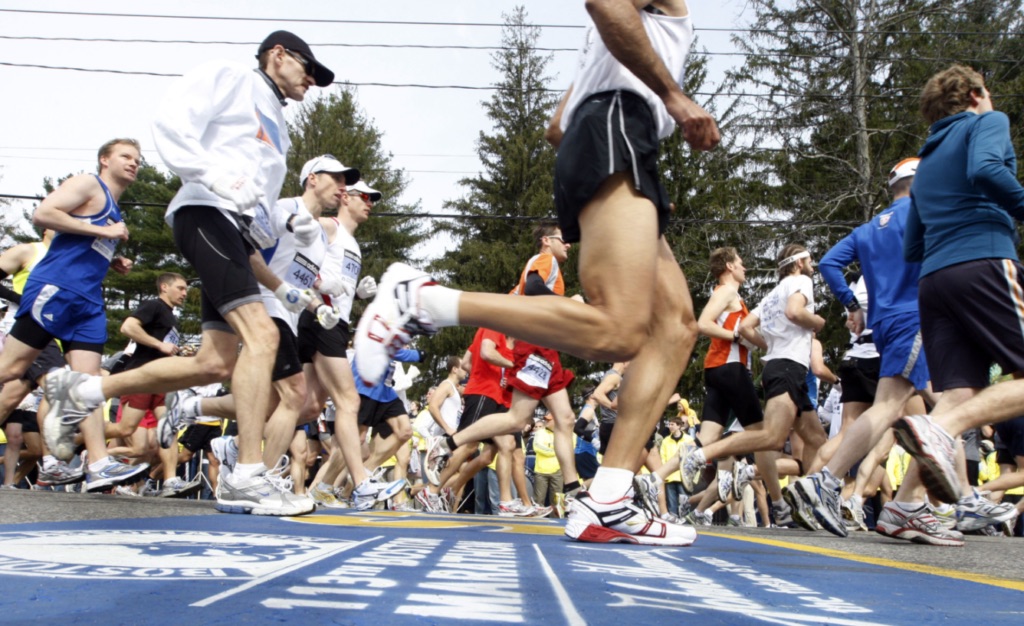10 Tips To Know When Running The NYC Marathon
 Running a marathon is no easy task, follow these tips to help you get your across the finish line in fine shape.
Running a marathon is no easy task, follow these tips to help you get your across the finish line in fine shape.
More than 50,000 runners from around the world participate in the NYC marathon annually. Ever considered how they do it? Here are 10 running tips you need to know if you plan on running the NYC marathon.
Stay Loose
Many runners tense up in their upper body, which can make running feel twice as difficult. Roll up a sheet up paper and run with it for a few minutes as if you were holding a baton in a relay. If the paper comes back scrunched, you’re squeezing too hard. Loosen your hands up and reduce the tension in your shoulders.
Loosen Up Your Feet
To improve and loosen the tissues on the bottoms of your feet. Place a small ball such as a tennis ball on the floor and gently roll from your hell to the ball of your foot. Make this part of your daily routine by rolling the ball 30 seconds on each foot.
Finish Fast
When training for the marathon, finish fast on your easy runs. Wait until the last five minutes of a longer run and then speed up and finish fast. This will increase your finishing time during the marathon.
Practice Perfect Form
For perfect running form, your legs should move like the hands on a clock. Bring your foot up to the 12 o’clock position and reach to the 3 o’clock. Strike the ground directly beneath your body at 6 o’clock. Then pushing off to 9 clock behind you. This circular motion affords a faster running time.
Slow Down Your Breathing
Most distance runners breath too much. Slow down your breathing, relax a little, and you’ll find running is much easier.
Land on Your Forefoot
Runners who strike on their forefoot, experience smaller collision forces than heel foot strikers. Teach your body to land on your forefoot using a line of tape on the ground. Practice jump roping with one leg landing on the forefoot. Stay on the line without looking.
Squats for Better Strides
A deep comfortable squat with feet shoulder width apart and seat almost touching the ground helps improve ankle, knee and hip mobility. This will give your joints a stronger, more stable position when running. Do this squat pattern once or twice a day while holding the bottom position for at least a minute
Tread in All Directions
Run backwards and sideways on the treadmill. This will activate muscles and micro tendons you usually never use. This increases strength, stability and support for the muscles that are typically overused when running. This also builds core strength by forcing your abs to engage and help your balance.
Empty Your Mind
Empty your mind and don’t focus on your body when you run. This will help your stride and improve your chances of finishing first.
Bring on the Box Jumps
When you run, your body functions like a spring. Every time your foot hits the ground, tendons and muscles stretch like as rubber band to absorb the energy on impact. Plyometric moves, such as the box jump, are great for increasing stiffness in the legs on impact.
Try this: Stand on one leg and jump on a six inch tall box, then immediately back down. Complete 12 jumps then switch to the other leg to complete the set,.
To learn more about physical therapy for running, visit our website at www.moriartypt.com or call us at (845) 454-4137.
Photo Cred.
Smith, J. retrieved on Nov 7, 2016 from www.Shape.com/fitness/treaning-plans/best-running-tips-all-time. Shape Magazine.